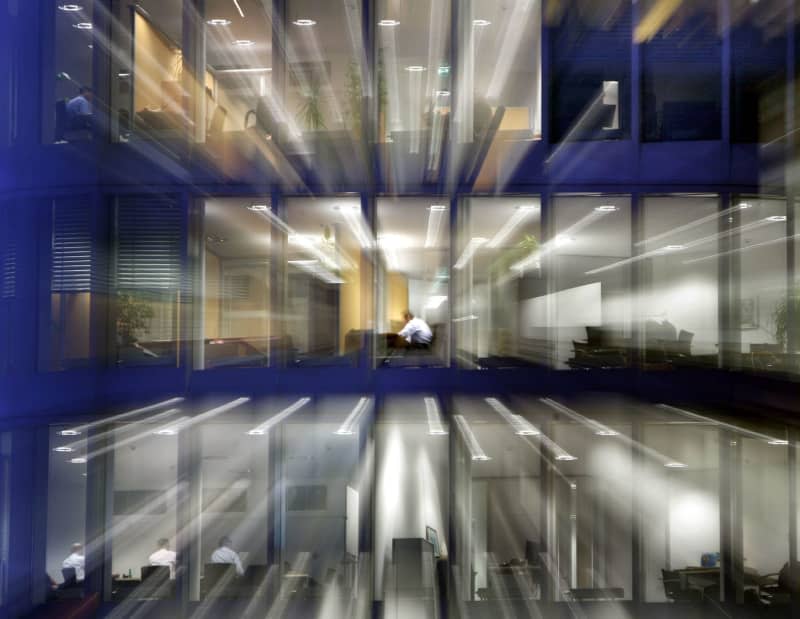Microdosing LSD: Are there benefits? What about risks?

It doesn't take much LSD, short for lysergic acid diethylamide, to substantially alter a person's state of consciousness.
Compared with many other substances, the amounts are very small, says Dr Volker Auwärter, director of the forensic toxicology laboratory at the University of Freiburg Medical Centre in Germany: "Upwards of 50, 100 micrograms are said to be a psychedelic dose."
The European Monitoring Centre for Drugs and Drug Addiction (EMCDDA) calls the hallucinogen "one of the most potent drugs known."
But what happens if you greatly reduce the dose - to about 10 micrograms? Let's check the facts on LSD microdosing:
Claim: Taking minute amounts of LSD is safe.
Assessment: Possible side effects are still unclear.
Facts: A person who microdoses LSD typically takes about 10 micrograms, just a tenth or twentieth of the amount normally taken for a "trip," or psychedelic experience, says Dr Felix Müller, deputy senior physician at Basel University Psychiatric Clinics in Switzerland, where he's in charge of psychedelic-assisted therapy.
In contrast to people who take psychedelic drugs in higher doses, however, microdosers usually take another dose after a few days, says Müller, who's been doing research on LSD for about 10 years.
Randomized controlled trials on microdosing examine the regular intake of tiny amounts of psychedelic substances - about every three days over a prolonged period.
What does this means in terms of possible risks?
As with other hallucinogens, dependence on LSD doesn't occur, the EMCDDA says. Nor is there a risk of poisoning in the sense of toxic injuries to internal organs, even at high doses, according to Auwärter.
The risks that do exist, Müller says, are more to mental than physical health, adding that whether this also applies to LSD microdosing hasn't been conclusively determined. "[LSD microdosing] is a relatively recent phenomenon," he remarks. "And it's certainly conceivable that repeated use is another matter altogether."
Müller points out that pharmacologists once suspected that LSD could cause changes in heart valves, as had occurred a number of years ago with then-available medications that bound to and activated the same receptor in the body.
Accordingly, Dr Matthias Liechti, director of the Division of Clinical Pharmacology and Toxicology at Basel University Hospital and head of the Department of Biomedicine's psychopharmacology research group, says studies should investigate possible side effects on heart valve function from regular, months-long LSD use.
In a randomized controlled trial of microdosed LSD's effects on healthy adult men, published recently in the journal Biological Psychiatry, researchers from the University of Auckland's School of Pharmacy conclude that microdosing "appears to be relatively safe ... notwithstanding a risk of anxiety."
Müller cautions, however, that such studies are few and short-term, expressing surprise that people - "relatively naively" - would get involved with LSD microdosing. After all, he says, it's a bit like taking a medicine that hasn't yet been approved for use as it's still being tested for side effects.
What other risks are there?
LSD microdosers can't be sure of the amount they're actually taking. "Whether microdosed or taken in the 'classic' manner, the content of active pharmaceutical ingredient is never really known," says Müller, explaining that the only way to find out is to have it tested at an addiction prevention centre.
"LSD is usually sold dripped onto plotter paper - similar to blotting paper - that's cut into squares," Müller says. A square typically contains doses of 100 or 200 micrograms. Microdosers cut the paper squares into smaller pieces.
Dosing this way is "inexact though, of course" Müller says, just as it is when LSD is sold dissolved in water or alcohol - 100 micrograms per drop, for example - and further diluted into microdoses.
While Müller doesn't regard this as being physically dangerous - "extremely high doses" are necessary before LSD becomes problematic - he says the mental health effects of higher doses are stronger and longer lasting.
"When you microdose it's naturally possible to be way off the mark," he warns.
Claim: Microdosed LSD enhances concentration and creativity.
Assessment: Studies haven't proven this.
Facts: Clinical evidence on whether tiny doses of LSD can boost concentration and creativity, and help combat depression and anxiety disorders is in short supply.
"Because of the small number of controlled trials that have been done, there's hardly any data on the effects of LSD microdosing," notes Liechti, who says the immediate effects are similar to, but weaker than, those from high doses.
Although there are indications of improved well-being in trial participants who are given a small dose of LSD compared with those receiving a placebo, "it's only on the day of treatment, not afterwards," Liechti says.
Moreover, due to the dearth of trial results, nothing can yet be said on to what extent - if any - LSD microdosing eases depression and anxiety, he adds. And the University of Auckland study showed no significant effect on creativity.
Reports of improved mood and cognitive functioning by LSD microdosers have been supported only to a limited extent in randomized controlled trials to date, according to the New Zealand researchers, and none have found lasting effects in these areas from repeated use of minute amounts of LSD.

